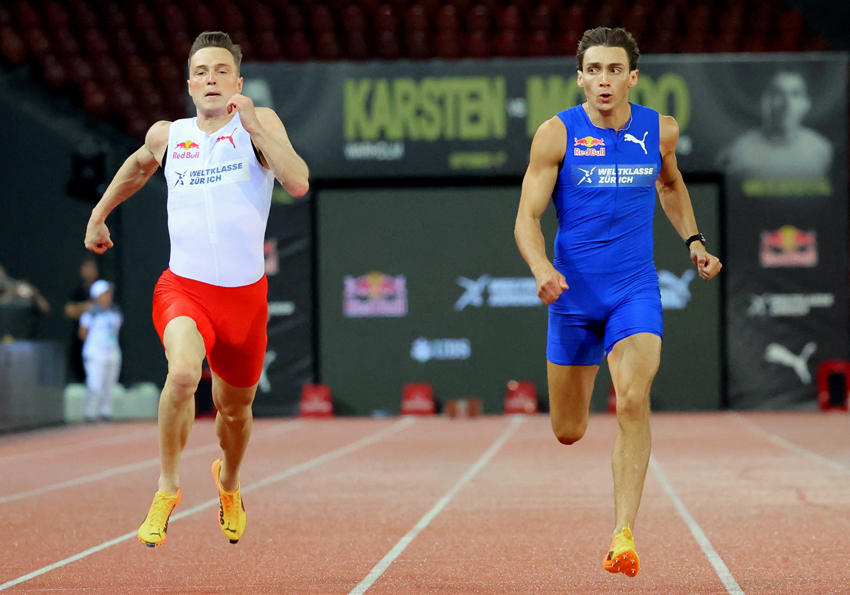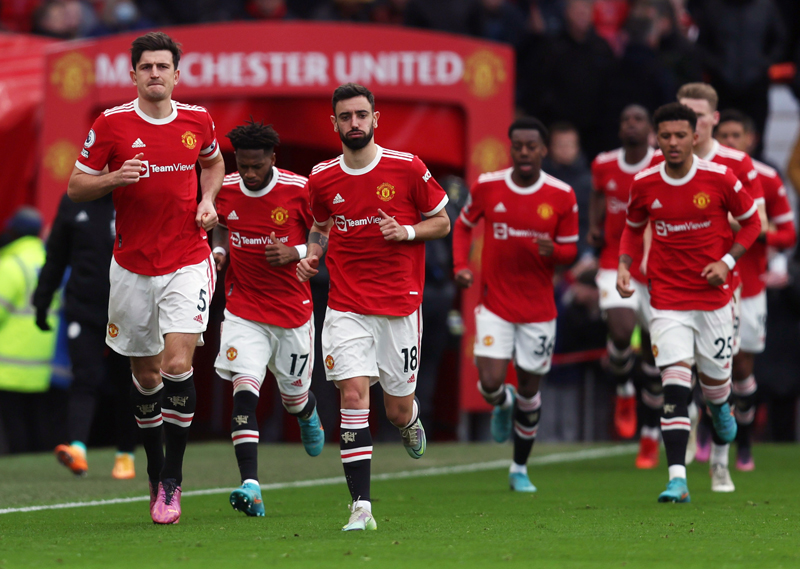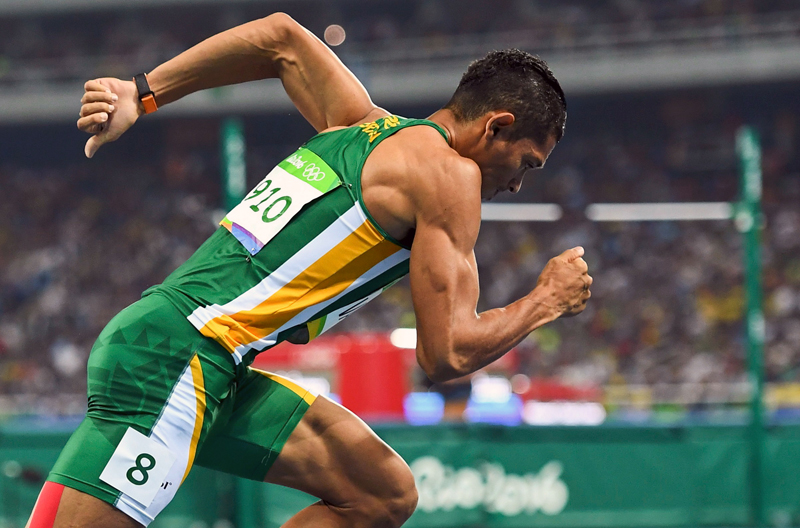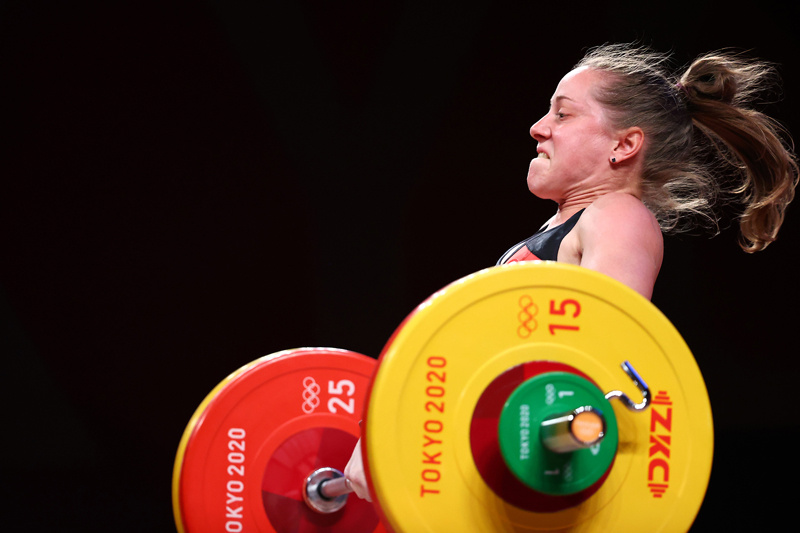Plyometrics training: soft or hard surface for optimum gains?

Is soft or hard ground better for plyometrics jump training? SPB looks at brand new research and explains that it all depends on the benefits an athlete is looking for
A properly constructed and implemented strength-training program can produce numerous benefits for athletic performance, including stronger muscles with increased resilience and reduced the risk of injury, greater levels of power and sprint ability, and (very importantly for endurance athletes), more efficient muscles that can use oxygen more sparingly, producing a significant endurance performance advantage.Plyometrics for strength
Most studies confirming the benefits of strength training have employed some kind of resistance training intervention – either using free weights or weight machines (see this article for a discussion about the pros and cons of machines vs. free weights). However, there are other modes of strength training known to be beneficial to athletes, one of which is ‘plyometrics’. Although coming very much to the fore again over the past five year or so, plyometrics (developed by Yuri Verkhoshansky, the former Soviet track coach/ sports scientist) has in fact been a widely-used mode of athletic strength conditioning for over 40 years.Plyometrics uses the principle of a quick-fire action and reaction between two muscular actions – a shortening and a lengthening one. The former is known as a concentric muscular action and the latter an eccentric one. For example, in the drop/depth jump, which involves jumping from a raised platform onto the ground, upon which a rebound jump is immediately made, the muscles, ligaments and tendons surrounding the ankle, knee and hip joint will undergo a stretch (eccentric action), immediately followed by shortening (concentric action) and a release of energy (concentric reflex). For an in-depth discussion of plyometrics training principles, readers are directed to this article. What Verkhoshansky discovered was that strength, speed and power could be enhanced by plyometrics training and he also determined that the speed of any movement is key to plyometrics. Basically, when you perform plyometrics strength training, you are ‘teaching’ your body to release more ‘athletic horsepower’ through faster firing muscles.
Variations on a theme
As plyometrics training has evolved, variations have emerged; the platform height, number of reps and sets, frequency of plyometrics sessions and even whether to add extra weight when performing plyometrics have all been investigated in previous studies(1). However, given that plyometrics involves an interaction and reaction between the athlete and the ground, you might be surprised to learn that the surface type upon which plyometric training is performed has received relatively little attention from sports scientists. Some of the few studies that have been carried out found the following:- In a study on amateur soccer players, sand induced greater squat jump improvements (9.25%) compared to grass (5.02%), and a greater improvement in 20m sprint time was seen for grass (27.86%) compared to sand (25.07%)(2).
- A study on untrained but recreationally active men found significant improvements in vertical jumping and 20m sprint time after land-based PJT, whereas change of direction during sprinting and leg-press strength were enhanced by sand-based plyometrics(3).
- Greater improvements in maximal dynamic strength, jumping and sprinting were observed in physically active adolescent males after seven weeks of plyometrics jump training when it was conducted on a higher-impact reaction force surface (ie harder surface) compared to a softer, lower-impact surface(4).
- Researchers reported significant improvements in countermovement jump (CMJ), drop jump from 20cm (DJ20), change of direction and 30m sprint time in soccer players, using both soft and hard surfaces. However, the greatest gains were seen when a mixture of surfaces was used(5).
New research
To try and gain more clarity over the pros and cons of using different surfaces for plyometrics jump training, a new study by a team of international scientists on surface type and performance outcomes has just been published in the International Journal of Environmental Research and Public Health(7). Unlike previous studies on this topic, the participants were 20 highly trained female team sport athletes (volleyball), with at least three years’ experience in training and competition. In this 8-week intervention study, the researchers compared the effects of plyometrics training on key performance parameters required common to most team sports. However, before the program began, the athletes were randomly allocated to one of two groups: training on a hard wooden indoors court surface or training on a surface of sand. Regardless of surface, all the athletes performed identical training exercises. In particular, the researchers looked at a large number of performance outcomes to try and uncover how each surface might affect key aspects of performance. These outcomes - measured at the start of the 8-week program and then again afterwards - included:- Drop-jump height, performed from a height of 35cms, which assessed the height achieved and the ground contact time. From this was calculated an overall performance index (RSI), which was height divided by contact time.
- A ‘spike’ jump test where the athletes used a two- or three-step approach to then jump as high as possible from a force-plate.
- Counter movement jump height (CMJ) on the force plate to achieve the maximal jump height, whilst using arm swing to mimic a real-game volleyball performance.
- One-rep maximal strength test performed on a leg press machine.
- Two 20-metre sprint speed tests; one in a straight line and another incorporating changes of direction.
- Maximal 30-second anaerobic power, assessed using an incremental cycling challenge (Wingate test).
- Maximal 3-minute aerobic capacity (to assess cardiorespiratory endurance), performed using an incremental treadmill test.
- Double-leg hop forward
- Repeated countermovement jump
- Standing single leg hoping
- Double-leg side-to-side jump (30 cm distance)
- Single-leg side-to-side jump (60 cm distance)
- Double-leg hurdle jump forward
- Double-leg depth jump (40 cm high)
- Tuck jump
- Kangaroo jump forward
- Double-leg box jump (40 cm)
The key findings
When the data was analyzed, the researchers found key areas of performance differences, depending on which surface had been used for plyometrics training. When it came to cardiorespiratory endurance, plyometrics training on sand produced a performance gain of +2.5% whereas the hard court surface trained athletes actually experienced a very slight drop (-0.5%). The advantages of sand over the hard court was even more marked for maximal leg strength; the sand-trained athletes increased strength by 7.8% compared to just 1.3% for the hard-surface trained athletes (see figures 1&2). In addition, the countermovement jump peak force development was superior in the sand-trained athletes.However, when it came to depth jump height performance, here the hard surface--trained athletes had a distinct advantage; they gained +13.6% in performance whereas the sand-trained athletes experienced a -3.7% drop in performance. In all other parameters, while there were slight differences in performances between the hard and sand surface groups, these were not large enough to be considered significant.
Figure 1: Percentage change in leg strength performance

The sand-trained plyometrics athletes made large gains whereas only slight gains were observed in the court-trained athletes.
Figure 2: Percentage change in cardiorespiratory endurance

The sand-trained plyometrics athletes made significant gains whereas a slight decrease was observed in the court-trained athletes.
What do these results mean for athletes?
The first thing to state is that while both groups made across the board gains in most areas, performing plyometrics on a sand surface resulted in significantly greater gains in leg strength, cardiorespiratory endurance and countermovement jump performance. This is perhaps not surprising; research shows that the energetic cost of walking and running on sand is more than on rigid surfaces because it involves more muscle fibres and generates greater loadings in the lower extremities(8). This greater mechanical work when training on sand arises from the fact that some of the energy applied by the legs is dissipated by generating movement in the sand itself; therefore to maintain the equivalent speed as on firm ground, extra energy expenditure is needed.Meanwhile, the heights achieved in the drop jump and countermovement jump tests were higher after the hard surface training. This is most likely because in order to produce an efficient stretch/concentric reflex impulse in the muscles requires a firmer, more unyielding surface. This makes sense; plyometrics training is known to help the muscles and tendons develop more spring-like properties to efficiently return stored elastic energy back as movement. However, as the mechanically minded among you will appreciate, any efficient spring-like energy storage system requires the spring to be anchored firmly to an object that is reluctant to yield! Therefore, where developing maximum jump height is desired, plyometrics performed on a hard surface is likely to produce superior results compared to the same exercise performed on sand or soft grass.
How should these findings inform the training practices of athletes and coaches? As is so often the case, specificity is the key. Given the benefits of sand training, performing plyometrics on sand (or by implication a very soft grass surface) could be more recommended for general conditioning. By improving cardiovascular fitness, strength, countermovement jump performance anaerobic power and maximum leg strength, this mode provides a great range of benefits, and could be particularly useful during the early phase of the season, when the goal is to build a good conditioning base across the board. In addition, the softer surface is likely to be more forgiving for novices or those returning to training after a break, where post-plyometrics muscle soreness can sometimes occur.
However, when it comes to jump height, some specific hard-surface plyometrics training is likely to pay dividends – particularly for athletes playing on hard court surfaces (basketball, volleyball, netball etc). This mode of plyometrics training added to the pre-competition phase is likely to yield real benefits. Regardless however, it is important to remember that all forms of plyometrics provide a great addition to any strength program and can give great performance benefits!
References
- Scand J Med Sci Sports. 2020 Jun; 30(6):983-997
- Br J Sports Med. 2008 Jan; 42(1):42-6
- Interv Med Appl Sci. 2014 Sep; 6(3):125-30
- J Strength Cond Res. 2013 Oct; 27(10):2714-22
- J Strength Cond Res. 2020 Sep; 34(9):2644-2653
- J Strength Cond Res. 2009 Mar; 23(2):495-506
- Int J Environ Res Public Health. 2021 Dec; 18(24): 13093
- J Exp Biol. 1998 Jul; 201(Pt 13):2071-80
You need to be logged in to continue reading.
Please register for limited access or take a 30-day risk-free trial of Sports Performance Bulletin to experience the full benefits of a subscription. TAKE A RISK-FREE TRIAL
TAKE A RISK-FREE TRIAL
Newsletter Sign Up
Testimonials
Dr. Alexandra Fandetti-Robin, Back & Body Chiropractic
Elspeth Cowell MSCh DpodM SRCh HCPC reg
William Hunter, Nuffield Health
Newsletter Sign Up
Coaches Testimonials
Dr. Alexandra Fandetti-Robin, Back & Body Chiropractic
Elspeth Cowell MSCh DpodM SRCh HCPC reg
William Hunter, Nuffield Health
Keep up with latest sports science research and apply it to maximize performance
Today you have the chance to join a group of athletes, and sports coaches/trainers who all have something special in common...
They use the latest research to improve performance for themselves and their clients - both athletes and sports teams - with help from global specialists in the fields of sports science, sports medicine and sports psychology.
They do this by reading Sports Performance Bulletin, an easy-to-digest but serious-minded journal dedicated to high performance sports. SPB offers a wealth of information and insight into the latest research, in an easily-accessible and understood format, along with a wealth of practical recommendations.
*includes 3 coaching manuals
Get Inspired
All the latest techniques and approaches
Sports Performance Bulletin helps dedicated endurance athletes improve their performance. Sense-checking the latest sports science research, and sourcing evidence and case studies to support findings, Sports Performance Bulletin turns proven insights into easily digestible practical advice. Supporting athletes, coaches and professionals who wish to ensure their guidance and programmes are kept right up to date and based on credible science.









